Carlisle was our stopover on a recent trip to Scotland which although drivable in a day we like to explore new places.
Staying in the Ibis hotel once in our room we could have been back in France but we've never seen this on our travels across the water.
As members of English Heritage we visited Carlisle Castle which began life as a Roman Fort in AD72 used for troops invading Scotland.
In the 7th century the Kings of Northumbria sited an abbey in Carlisle and for half a century the fortress was a stronghold against the Scots until the crowns of England and Scotland were united in 1603.
The castle has had many royal occupants since William II in 1092 until it became under army control in the 1960s as the Border Regiment's headquarters.
The castle keep, a stone structure with towers and fortifications, was built by Henry I in the early 12th century. David I King of Scotland took over the castle and reinforced its walls. Henry II and King John both influenced how the castle grew in size and dominance.
Edward I was based here for three months during his fighting against the Scots in 1296. After this line stay the tower was built to provide better accommodation.


Carlisle has been the centre of fighting for centuries including a unsuccessful seige by Robert the Bruce, King of Scotland in 1315 after his victory at the Battle of Bannockburn. The War of the Roses between the Houses of Lancaster and York was one of the bloodiest sieges in 1461.
With Scotland and France becoming a strong alliance Henry VIII reinforced the castle in the mid 16th century, and not long after Mary, Queen of Scots, lived in the castle at a huge cost in food and wine to Elizabeth I. The castle was not used as a residential palace again.
The Union of England and Scotland in 1603 in theory would make Carlisle Cadtle obsolete but it became a main part of the Civil War under the reign of Charles I in 1642 when the Parliamentarian army surrounded Carlisle with the plan to starve out the city. 1645 brought reinforcements as the English troops increased the pressure on the city and in June the city surrendered.
Still more trouble beseiged the castle during the second Jacobite rising when Prince Charles Edward Stuart captured Carlisle in 1745 as he travelled south. Having met resistance in the Midlands he returned to Scotland but left an army of over 400 at the castle to keep the English at bay. However this was not the case and several Jacobite soldiers were imprisoned and 31 publicly executed.
Quieter times then passed with the castle having needed repairs and defences increased including the addition of a drawbridge. Carlisle Castle became an important army barracks from the early 1820s which were extended in the 19th century when it became the headquarters of the Border Regiment. The Regiment moved out in 1959 and now English Heritage shares the site with many organisations including Cumbria’s Museum of Military Life.
Athelwold was the first Bishop of Carlisle when the church became a cathedral in the 1100s. Two friaries were founded in 1233 close to the cathedral which was refurbished a couple of hundred years later when Edward I held his parliament in Carlisle.
Hey VIII was responsible for the Dissolution of the friaries and during the Civil War stones from the cathedral were used to reinforce the castle. The cathedral has many uses, including housing Jacobite prisoners, and hosting the marriage of Sir Walter Scott in 1797. It now houses a memorial chapel for the Border Regiment.
.
We didn't have long to look around but the wooden carvings, screens, stained glass windows and painted ceiling were amazing. As were the painted panels on the back of the choir stalls. They depict the 12 Apostles, St Cuthbert of Lindisfarne, St Anthony of Egypt and St Augustine of Hippo. The words are written in Anglo-Saxon and were painted in the late 1400s.
After a great time exploring the castle and cathedral we rested our weary legs in the Coco Mill with two flights of beer. Our selections were (from left to right) Tropical Pale, Pinky Promise, Subway to Venus, Raspberry Ripple Screwball, Wylde Moon and Neck Oil, a great way to try them all.
Carlisle was a great place to stopover on our way to Scotland, a lovely start to our autumn trip north.


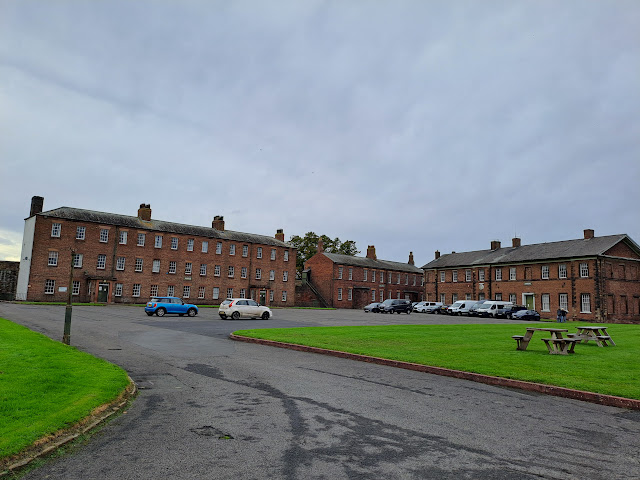
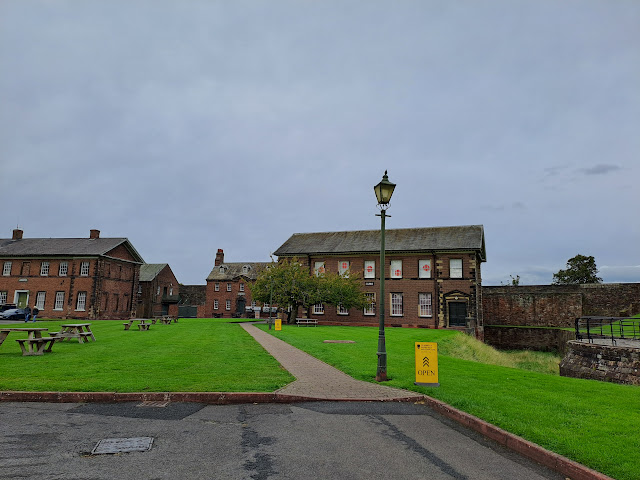






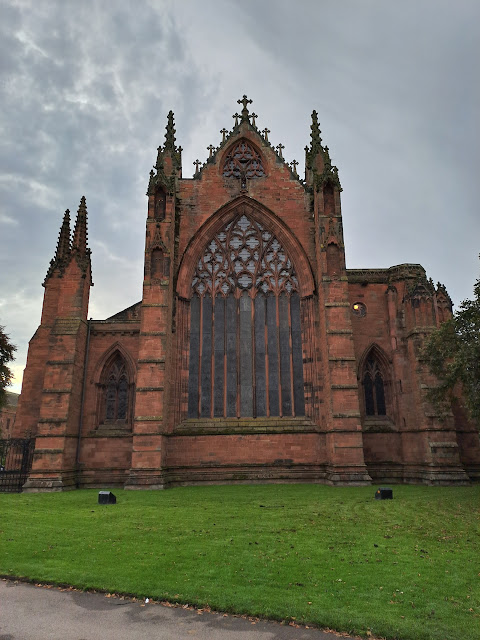

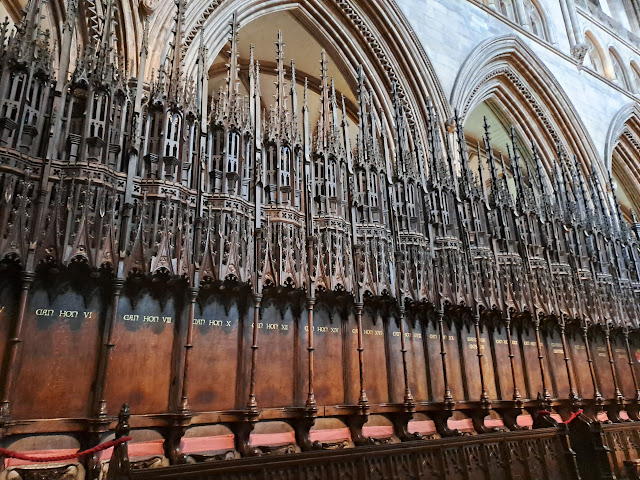
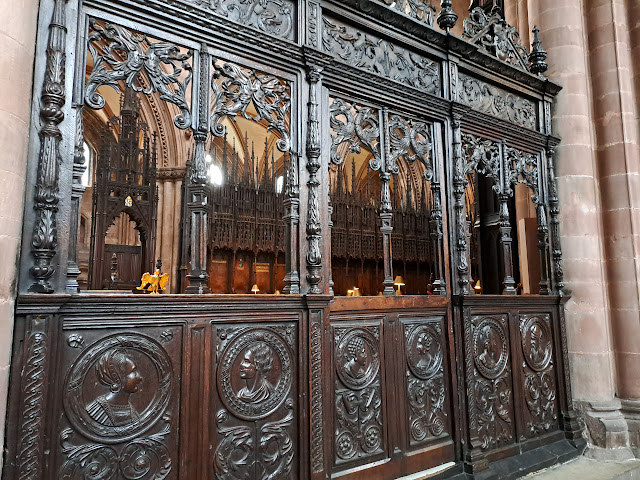




No comments:
Post a Comment